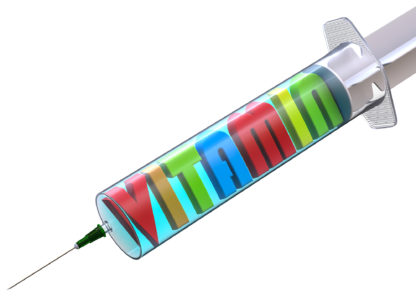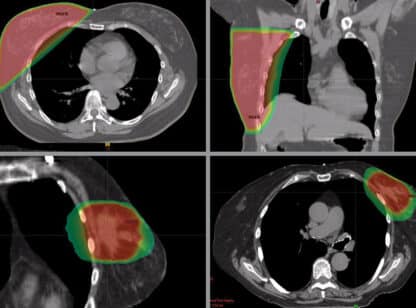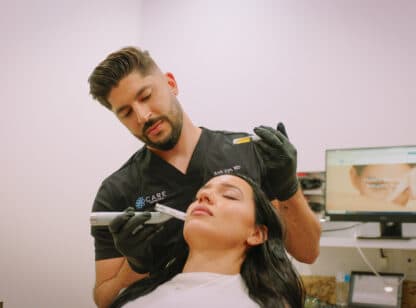Three Tests That Could Save Your Life
The unthinkable happened recently. My friend who was an icon of health, an exercise model and leader in teaching healthy choices died at age 57. She was an inspiration and a genuinely wonderful person. She left kids and friends and a devoted husband. As we all reeled with the news and our questions of why and how echoed in our minds, I realized there were three tests I wished I could have each person perform and act upon to minimize the chances of unexpected tragedy.
Neuro-scan
The first test, touted as one that everyone should do once in their life, is a Neuro-scan, a scan of the brain to assess abnormal blood vessel formations. These abnormalities can be either aneurysms – weak spots in the wall of blood vessels – or can be tangles of blood vessels that are fragile and can burst. By doing this scan at least once in our lives, we can know if we have a propensity to this problem. Then we can take action to repair, clip, or remove the abnormal cluster or section of blood vessels.
This test is not often covered by insurance and can run about $1,000 but is a one-time test as these blood vessel malformations are something we are born with, not something we tend to develop later in life. This test is especially important to choose if you have a family history of sudden death, stroke or aneurysm.
MTHFR mutation blood test
The second test has to do with risk for blood clots. This was the likely cause of death for my friend. Blood clotting abnormalities can run in families, so if you have a family history of blood clots or stroke, it certainly makes sense to have a complete blood clotting work-up with your doctor. However, the genetic test we should all have is testing for the MTHFR mutations.
There are two main genes labeled MTHFR that code for an enzyme that is crucial for folate function in our body. We get one copy of each gene from each parent, so of the four genes, we can have all copies working well or up to four copies that are mutated and non-functional. The impact of these non-functional copies is rarely realized and extremely widespread. 44% of our North American population has at least one mutant MTHFR gene and for every mutated copy, we have about a 30% reduction in efficiency of the work of folate in our body in repairing broken DNA, detoxification in the liver, prevention of blood clots and synthesis of neurotransmitters…just to name the more major functions.
Those who have MTHFR mutations need to supplement folate (not the synthetic folic acid often found in our food or vitamins); take precautions to prevent blood clots (avoid oral estrogens and consider taking nattokinase or a baby aspirin daily); and carefully avoid toxins in our food, water, vaccine and medication sources.
LDL-particle count
The third test on my “everyone should have” wish list is the LDL-particle count. Our leading cause-of-death in America is heart disease. The American Heart Association has done well in teaching us that we should “know our numbers.” However, there is one rarely performed test that is most predictive of whether we have risk for a heart attack and that is the LDL particle number.
Our common lipid-panel tests for total cholesterol, triglycerides, HDL-C and LDL-C values; the HDL-C and LDL-C are calculated weights of high and low-density cholesterol respectively. The problem with these values is that they are not accurate predictors of risk. The LDL-C value is the main target when treating cholesterol in our Western medicine model. However, it is literally only 50% accurate at predicting who is safe from, and who will succumb to, a heart attack.
The most accurate number predicting heart events is actually the LDL particle number. This number counts how many pieces make up the weight referenced in the LDL-C value. So if my LDL-C is 103 mg/dL it could be made up of 1120 pieces or 2400 pieces. The higher the number of pieces, the higher the risk of heart attacks. Normal particle counts are values below 1000, and if the number of particles is high, there are natural methods such as soluble fiber, blood-sugar control and vitamin D support that can help a person normalize their counts and lower their risk.
These three tests are simple, can be requested from your physician, and can help you lower your risk of unexpected, life-threatening incidents. Ask your physician to order:
1) A brain MRA/MRI scan to evaluate for vascular abnormalities;
2) An MTHFR mutation blood test;
3) A NMR Lipid-particle test (also called Lipo-fit at Quest Labs).
Please be proactive in your health! You are valuable and your loved-ones want you here for a long time.
Dr. Brossfield practices functional medicine for men and women at her practice, XO Health, in Rancho Mirage and can be reached at (760) 573.2761.














































Comments (1)
Thank you, Jeralyn, for this advice. I plan to find a place to have these tests done.